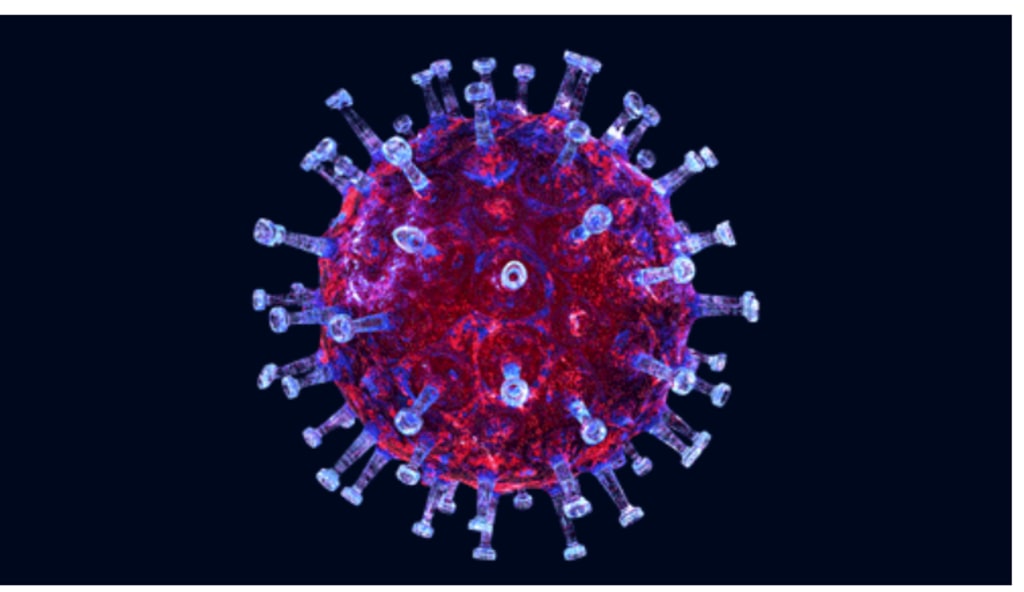Chasing coronavirus
from bats to humans

Title: Chasing Coronaviruses: From Bats to Humans
Introduction:
For years, scientists have embarked on a quest to trace the origins of deadly viruses, leading them to the remote corners of China's mountains and caverns. One such discovery took place in Shitou Cave, where scientists identified bats as the natural reservoir for a coronavirus responsible for the severe acute respiratory syndrome (SARS) epidemic in 2003. Coronaviruses, characterized by their crown-like protein spikes, have become household names in recent times, with SARS-CoV causing SARS, MERS-CoV causing MERS, and SARS-CoV-2 causing the ongoing COVID-19 pandemic. As we delve into the world of coronaviruses, understanding their characteristics, mutations, and potential threats becomes imperative to combat future outbreaks effectively.
The Realm of Coronaviruses:
Coronaviruses comprise a large family of viruses, with hundreds of known strains. Among them, seven have been identified to infect humans, causing varying degrees of illness. Four of these coronaviruses result in common colds, mild respiratory infections, while two target the lungs, leading to severe diseases. The seventh, SARS-CoV-2, exhibits characteristics of both mild cold-causing strains and severe lung-infecting strains, making it highly contagious and capable of inflicting significant respiratory damage.
Transmission and Survival:
Coronaviruses primarily spread through respiratory droplets expelled when an infected person coughs or sneezes. These droplets contain the virus and can enter another person's nose or mouth, facilitating transmission. Enclosed spaces with close proximity among individuals provide ideal conditions for virus transmission. Additionally, cold weather prolongs the virus's viability outside the body, while UV exposure from sunlight may render it less stable. Although seasonal variations play a role in the transmission dynamics of established viruses, new viruses with no immunity among the population can spread rapidly regardless of environmental conditions.
Genetic Structure and Mutations:
Coronaviruses store their genetic information on RNA, distinguishing them from DNA viruses. RNA viruses, like coronaviruses, tend to be smaller and replicate quickly, making them more prone to errors or mutations during replication. While most RNA viruses lack a proofreading mechanism, coronaviruses possess a unique enzyme that corrects replication errors, resulting in a slower mutation rate. This stability gives our immune systems, antiviral drugs, and vaccines a better chance of recognizing and combatting coronaviruses effectively.
Immune Response and Treatment Challenges:
When exposed to a virus, our immune systems develop recognition and defense mechanisms against future infections. However, mutations in viruses can evade immune recognition and potentially render treatments and vaccines less effective. The slower mutation rate of coronaviruses offers hope that our immune systems, drugs, and vaccines can maintain recognition for a longer duration, providing better protection. Despite this advantage, no approved treatments or vaccines currently exist for coronaviruses. Limited attention has been given to treating common cold-causing coronaviruses, and previous research efforts targeting SARS and MERS concluded prematurely due to the containment of those epidemics.
Mitigating Future Outbreaks:
As human activities encroach further into animal habitats, the possibility of new coronaviruses jumping to humans looms. However, by delving into the unknowns surrounding these viruses, we can mitigate the devastating consequences of such outbreaks. Investigating the longevity of immunity, developing effective treatments, and investing in vaccine research are crucial steps. By focusing on these areas, we can prepare ourselves better for future challenges and minimize the impact of emerging coronaviruses.
Conclusion:
The journey to understand coronaviruses, their origins, and behavior is an ongoing endeavor for scientists worldwide. From the depths of caves to the complexities of genetic mutations, unraveling the mysteries of these viruses is essential to safeguard public health. By combining scientific exploration, wildlife conservation efforts, and proactive research, we can strive towards a future where potential coronavirus outbreaks are met with swift and effective responses, minimizing their impact on global health and well-being.
Subscribe!!!@~@





Comments
There are no comments for this story
Be the first to respond and start the conversation.